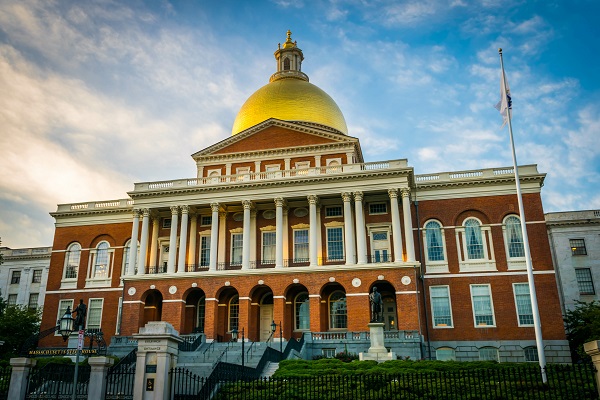Baker-Polito Administration Announces Final Guidelines for New Multifamily Zoning Requirement

Following extensive public outreach period, final guidelines outline how state will determine if an MBTA community is in compliance with Section 3A of M.G.L. c. 40A
BOSTON – Today, the Baker-Polito Administration announced final compliance guidelines for new Section 3A of M.G.L c. 40A, enacted as part of the economic development bill in January 2021, which requires that an MBTA community shall have at least one zoning district of reasonable size in which multifamily housing is permitted as of right and meets other criteria set forth in the statute. The final guidelines can be found here
“The multifamily zoning requirement is all about setting the table for more transit-oriented housing in the years and decades ahead—which is not just good housing policy, but good climate and transportation policy, too,” said Housing and Economic Development Secretary Mike Kennealy. “The Executive Office of Housing and Economic Development and the Department of Housing and Community Development, working closely with the Massachusetts Housing Partnership, communities, and stakeholders, took a thoughtful approach to developing compliance criteria for MBTA communities in accordance with the new law. Cities and towns are necessary partners if the Commonwealth is to confront our housing crisis, and through our guidelines and technical assistance, we can help communities achieve the goal of the multifamily zoning requirement to unlock new, transit-oriented housing units in Massachusetts.”
In December 2021, the Department of Housing and Community Development released draft guidelines on the new multifamily zoning requirement for MBTA communities. From December 2021 to March 2022, the administration carried out a robust public comment and engagement process, including approximately 24 engagement sessions and inviting public comment through an online form that garnered nearly 400 public comments.
“We are proud to publish these guidelines today and partner with all MBTA Communities on planning for transit-oriented development. With proactive zoning and substantial resources, we have an opportunity to advance thousands of new housing units throughout the region and encourage welcoming, mixed-income communities, walkable neighborhoods, and increase public transit use,” said Undersecretary of Housing and Community Development Jennifer Maddox. “Massachusetts has incredible talent and programs across our state, quasi-public, and non-profit community development agencies to support housing production at the local level, and we look forward to working with communities, developers, and local organizations to meet our housing needs.”
In total, 175 MBTA communities are subject to the new multifamily zoning requirement. MBTA communities must submit an action plan to the Department of Housing and Community Development by January 31, 2023, and achieve full compliance in accordance with the following timetable:
Rapid Transit (12 communities): December 31, 2023
Commuter Rail (69 communities): December 31, 2024
Adjacent Community (59 communities): December 31, 2024
Adjacent Small Town (35 communities): December 31, 2025
As outlined in the law, noncompliant MBTA communities will not be eligible for funds from the following state resources: (1) the Housing Choice Initiative; (2) the Local Capital Projects Fund; or (3) the MassWorks Infrastructure Program.
The Commonwealth of Massachusetts, in collaboration with the Massachusetts Housing Partnership (MHP), will provide technical assistance to further help communities comply with the requirement, including online tools and other important resources. As part of the final guidelines, the Commonwealth has created a multifamily unit capacity tool to enable the Commonwealth and affected communities determine the multifamily unit capacity in a proposed zoning district. The tool will provide a GIS land map for each municipality and calculate a zoning district’s multifamily unit capacity and gross density based on inputs provided by each community.
